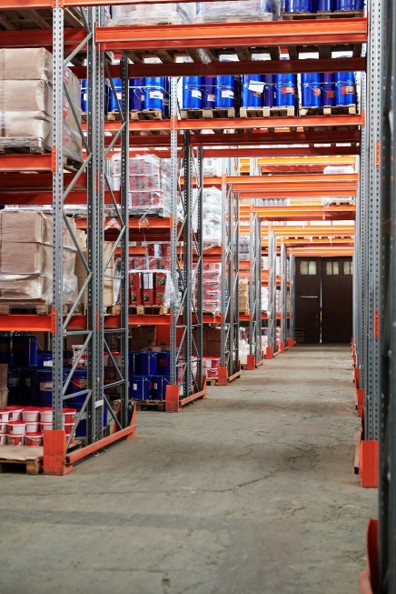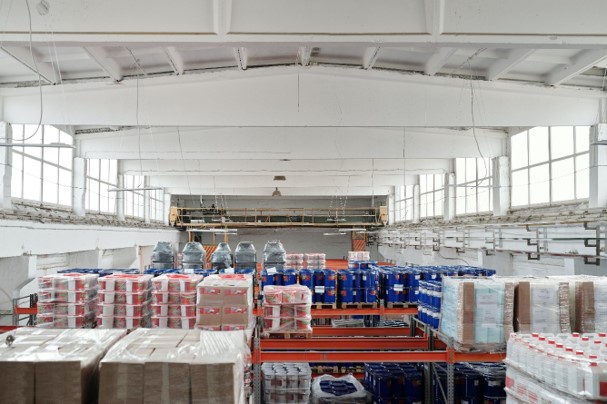WMS - Warehouse Management System
For the smaller warehouse
SageData is based in Ottawa, Ontario, Canada
This article provides an introduction to some of the features and
capabilities of the BassetPro Warehouse Management System. These include receive and put-away, pick and ship, but
also other features required for normal operation of a warehouse, such as
inventory checks, and movement and consolidation of materials.
BassetPro WMS is highly
configurable, so can be set up to meet the specific needs of each installation. It is a good choice for a smaller warehouse, and can
be readily expanded to include additional functions where these are required, or to handle increasing traffic as business expands.
Overview

The warehouse variant of BassetPro is built on the same chassis
as
BassetPro Assets, and shares many of the same features.
The warehouse variant is usually configured to operate as UIC or SKU based. UIC systems
track each individual item (this specific computer). SKU based systems track items in
bulk (500 work gloves). The system can accommodate both.
Typical WMS track the fundamental operations (Receive, Put-away, Pick and Ship), but also
manage more specific tasks such as cross docking, inventory verification, movement within
the warehouse, preparation of BOL (Bill of Lading) etc.
There is also frequently a requirement to link to external systems, for receipt of pick
orders, or release of invoices.
What does BassetPro do?
BassetPro uses a variety of technologies to cover the tasks described above, including barcode technology for put-away and picking, and RFID, commonly used for inventory verification.
Who is SageData?
SageData are based in Ottawa, and have been supplying these systems to the Federal Government for more than 25 years. We have supplied nearly every Federal Government Department and Agency, and are currently providing material management services to track materials being removed and replaced on Parliament Hill.
How are these systems configured?
How would you like them to be configured?
We have installations on our servers, on client networks, or standalone (in many cases
for high level security). User interfaces can be configured to your exact requirements.
External interfaces permit information to be exchanged with a variety of backend systems,
including SAP, Peoplesoft, and Quickbooks.

Imagine
Once BassetPro is installed and operational, the receipt, deployment, audit
and disposal of equipment becomes extremely simple. Because asset tags with barcodes or
RFID are used to identify items, tracking activity or registering a move or disposal
becomes easy, fast and accurate.
Reporting is comprehensive and fast. So managers can have a full accounting. You can know
exactly what you have, exactly where it is, and exactly when it was last touched.
BassetPro Warehouse
This variant of the product is intended for larger organizations. There are no material limits. The system can accommodate thousands of users, products, and daily transactions. The number of fields that can be managed is in excess of 100, and can be expanded if required. Reports are easily configured by the user. This system is built on baseline architecture that has already been used in major projects. The system can meet your identified immediate needs, but has the capacity to expand to accommodate new requirements as they arise.
Capabilities
BassetPro WMS (Warehouse Management System) can handle more than: 100 users,
1000 transactions per day, 1000 clients, 1000 locations, 100,000 products. Technologies
it can use include manual entry, barcode scanning, NFC, RFID, and BLE. For further
information contact SageData.
A project manager will assist you in confirming the appropriate configuration for your
application.
Conclusion
If you are running a warehouse, BassetPro can offer ease of use, reliable operation, and a detailed historical record of all activity. It can accommodate today's known requirements, and can easily be expanded to meet tomorrow's unknown needs.
If you found this useful, you might also want to review:
- an introduction
to barcode technology
- an introduction to RFID
- mobile data
collectors
- consulting
services: barcodes and their applications
QAOK5263 50294372
